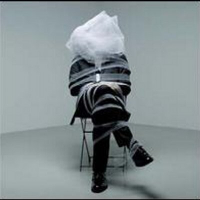Pros saddle height
actusreus
Posts: 51
Looking at pictures of professional cyclists, their saddle height/seat post height is often ridiculous; i.e., how much of the seat post is sticking out of the frame. I do not understand it at all, and it makes no sense to me. Assuming you get the correct frame size for your height and reach, and given the fact that your saddle height is determined by the proper knee angle when you're at the 6 o'clock position, extreme seat posts positions make no sense. Can someone explain to me how you can have a foot or more of the seat tube sticking out of the frame and still maintain correct angle at the bottom of the pedal stroke? Do the pros use much smaller frames for their height to save weight, and use super longs stems to make up for the short reach?
0
Comments
-
Yes, they often ride smaller frames for weight and stiffness purposes - but remember that by definition pro cyclists aren't much like the rest of us. They are fitter, more flexible and slimmer so they can ride in a position that most of us wouldn't even be able to turn the pedals.
Not something to emulate really.I'm left handed, if that matters.0 -
A lot of pros have an unusual body shape, made up of a smaller or normal torso and huge long legs that become massive levers capable of making them what they are - different to normal cyclists. That + the comments above about them just being fitter and more flexible is what counts.
Not all are tho - Cav looks like me on a bike at walking pace, so do a few others. It's not a 100% of pro riders who sit in the sky.0 -
I'd suggest that an increasing amount of pros in GTs appear to have their saddles set too low compared to the usual standards. Look at their legs at the bottom stroke. Nowhere near straight.The above may be fact, or fiction, I may be serious, I may be jesting.
I am not sure. You have no chance.Veronese68 wrote:PB is the most sensible person on here.0 -
They probably do have the seat height correct, but using a smaller frame for less weight and more rigidity. Which means more post showing and bigger drop to the bars, which means more aero and the need for a strong core etc.================
2020 Voodoo Marasa
2017 Cube Attain GTC Pro Disc 2016
2016 Voodoo Wazoo0 -
I'd suggest that most on here have their leg straighter than Chris in the photo below.
And there are some with their saddles much lower, I just can't find photos. The above may be fact, or fiction, I may be serious, I may be jesting.
The above may be fact, or fiction, I may be serious, I may be jesting.
I am not sure. You have no chance.Veronese68 wrote:PB is the most sensible person on here.0 -
Your going to get the odd one or two pros that have unusual proportions and their not going to have any more flexibility than can be attained by anybody else, I would say they seem to me to be useing much smaller odd proportion frames, does not that sloping top tube make for a longer seat tube anyway ?0
-
I know from an interview with Cannondale that Peter Sagan prefers a low frame with a long top tube. So yes, custom geometry. He also specifies 28mm tyres. :shock:The above may be fact, or fiction, I may be serious, I may be jesting.
I am not sure. You have no chance.Veronese68 wrote:PB is the most sensible person on here.0 -
Is a modern trend.
I think it's partly to do with weight; smaller frames tend to be lighter.
It is also partly because fewer frames are made-to-measure. Not that easy to build a custom carbon monocoque frame.
There's also a trend for straighter arms that reach lower, rather than further out towards you. Maybe that's easier on the arms, I don't know.0 -
I don't know if 'The Spider' is a very good example - http://www.velominati.com/tradition/rid ... he-spider/PBlakeney wrote:I'd suggest that most on here have their leg straighter than Chris in the photo below.
And there are some with their saddles much lower, I just can't find photos. 0
0 -
Saddle height is pretty much fixed, might look taller on a small sloping frame, but the distance to the bottom bracket is set... I don't think mine is any different from that of a PRO cyclist with my inseam length. I use the Lemond method, which before Bikefit wizardry was the golden standard and in many ways it still is.
Everything looks a lot more dramatic when you remove all spacers and fit the stem directly above the headset, mainly for aerodynamic reasons you want to be as low as possible... if you don't race that is pointless of course.left the forum March 20230 -
CiB wrote:A lot of pros have an unusual body shape, made up of a smaller or normal torso and huge long legs that become massive levers capable of making them what they are - different to normal cyclists. That + the comments above about them just being fitter and more flexible is what counts.
Not all are tho - Cav looks like me on a bike at walking pace, so do a few others. It's not a 100% of pro riders who sit in the sky.
LOL. This is just not true. Why, in a system full of levers (think crank arms, chainring and cassette) would the length of your leg make any difference?
A lot of them ride smaller frames to get low enough at the front (similarly, why a lot are on 13+cm stems). The bikes are made for the mass population, then raced by pros and as a result for the pros to get their extreme positions requires riding down a size.0 -
PBlakeney wrote:I know from an interview with Cannondale that Peter Sagan prefers a low frame with a long top tube. So yes, custom geometry. He also specifies 28mm tyres. :shock:
Sagan has short legs (like Cav) so to get aero he needs a longer top tube.0 -
joey54321 wrote:CiB wrote:A lot of pros have an unusual body shape, made up of a smaller or normal torso and huge long legs that become massive levers capable of making them what they are - different to normal cyclists. That + the comments above about them just being fitter and more flexible is what counts.
Not all are tho - Cav looks like me on a bike at walking pace, so do a few others. It's not a 100% of pro riders who sit in the sky.
LOL. This is just not true. Why, in a system full of levers (think crank arms, chainring and cassette) would the length of your leg make any difference?
A lot of them ride smaller frames to get low enough at the front (similarly, why a lot are on 13+cm stems). The bikes are made for the mass population, then raced by pros and as a result for the pros to get their extreme positions requires riding down a size.
As above. Suggesting that pros are all 'freaks of nature' is a bit odd. They are just 'normal' people, with the same range of body shapes and dimensions as the rest of us.0 -
Agree with most of above - in order to have short head-tubes and hence an aero position most pros will ride a smaller frame and compensate with a longer stem and seat-post.FFS! Harden up and grow a pair
 0
0 -
Most pro's ride off the peg frames now which are also being sold to more average cyclists, not as concerned with aerodynamics so head tubes are higher than a pro may want.
To get a low aerodynamic position many pro's will ride a frame size down, with a longer stem to compensate for reach. As a secondary effect longer stems make the handling more stable at high speeds, handy if you're descending cols at 100 kph.
I doubt weight has anything to do with it as quite a few bikes are adding weight to hit UCI minimum.
I doubt pro's are massively more flexible comparing to a similar aged amateur. However, when you're being paid to perform you're probably more likely to put up with some discomfort.
I certainly doubt pro's have longer legs as a rule.
As mentioned above, true saddle height seems like it may have dropped slightly, but maybe it's just an impression as a few of the prominent riders froome and sagan seem to have low saddle heights (relative to leg length not frame size).0 -
Small frame with sloping top tube and post at maximum extension = lower saddle? Maybe.thomasmorris wrote:As mentioned above, true saddle height seems like it may have dropped slightly, but maybe it's just an impression as a few of the prominent riders froome and sagan seem to have low saddle heights (relative to leg length not frame size).
Custom geometry would be where lugged frames have an advantage over monocoque.The above may be fact, or fiction, I may be serious, I may be jesting.
I am not sure. You have no chance.Veronese68 wrote:PB is the most sensible person on here.0 -
thomasmorris wrote:As a secondary effect longer stems make the handling more stable at high speeds, handy if you're descending cols at 100 kph.
I
Erm, not it doesn't. The wheelbase determines the handling and if you're riding a smaller frameset then it will be shorter and therefore less stable. What it does do is slow the steering down (the arc of the handlebar needing greater inputs to achieve the same turn).Trail fun - Transition Bandit
Road - Wilier Izoard Centaur/Cube Agree C62 Disc
Allround - Cotic Solaris0 -
Also, there has been a change in UCI regulations that allow for the saddle to point downwards more. Teams are using this to pitch the riders further forwards, and use longer stems to get the riders in a more aero TT position. A smaller frame would help getting lower at the front.0
-
^semantics. A longer stem will increase the turning arc = the bike will feel more stable / less twitchy.lostboysaint wrote:thomasmorris wrote:As a secondary effect longer stems make the handling more stable at high speeds, handy if you're descending cols at 100 kph.
I
Erm, not it doesn't. The wheelbase determines the handling and if you're riding a smaller frameset then it will be shorter and therefore less stable. What it does do is slow the steering down (the arc of the handlebar needing greater inputs to achieve the same turn).
If you're going to say wheelbase determines handling, then you should also mention fork trail and angle. Often these are adjusted on smaller frame sets to account for the shorter wheelbase anyway... in the end they all add up to the handling you feel.
Assuming they are riding a stock frame set a size smaller, with adjusted forks to account for the shorter wheelbase, them sticking a longer stem on than frame was designed for will make the bike feel more stable. Good at high speeds.0 -
thomasmorris wrote:
^semantics. A longer stem will increase the turning arc = the bike will feel more stable / less twitchy.lostboysaint wrote:thomasmorris wrote:As a secondary effect longer stems make the handling more stable at high speeds, handy if you're descending cols at 100 kph.
I
Erm, not it doesn't. The wheelbase determines the handling and if you're riding a smaller frameset then it will be shorter and therefore less stable. What it does do is slow the steering down (the arc of the handlebar needing greater inputs to achieve the same turn).
If you're going to say wheelbase determines handling, then you should also mention fork trail and angle. Often these are adjusted on smaller frame sets to account for the shorter wheelbase anyway... in the end they all add up to the handling you feel.
Assuming they are riding a stock frame set a size smaller, with adjusted forks to account for the shorter wheelbase, them sticking a longer stem on than frame was designed for will make the bike feel more stable. Good at high speeds.
*Drops mic*....0 -
g00se wrote:Also, there has been a change in UCI regulations that allow for the saddle to point downwards more. Teams are using this to pitch the riders further forwards, and use longer stems to get the riders in a more aero TT position. A smaller frame would help getting lower at the front.
Interested where you got this from, the bit about teams using it rather than the fact the uci has changed the rules.[Castle Donington Ladies FC - going up in '22]0 -
-
thomasmorris wrote:
Beat me to it!0 -
thegreatdivide wrote:thomasmorris wrote:
Beat me to it!
Great discussion. Thanks for all the replies. Slamming the stem is a somewhat related topic, but not really what I was talking about. Slamming the stem will exaggerate the drop and the relative positions of the saddle vs. the handlebars, but I'm talking about how high some riders have their seat posts fixed relative to their frames. I'm about 5'9" (about 175 cm) with a proportional build, and actually longish legs, and was fitted on a size 53 Pinarello Dogma F-10. My saddle height is 28.5 inches, which is 72.40 cm. That results in the seat tube sticking 7 inches (about 18 cm) from the frame. I can drop my handlebars more, but I cannot raise my saddle more as I would start rocking my hips at the bottom of the pedal stroke. But I can guarantee that most pros my height have their seat post sticking out way more than mine. Of course bike geometry plays a role, but on average, pro riders have a ridiculous length of the seat tube sticking out of the frames.0 -
That's because, as already mentioned, pro riders of your height will be riding a smaller frame than you, with longer seatpost and longer stem to offset it.
They do this in order to obtain a lower front end, and so a more aerodynamic position. The frame's head tube length otherwise limits how low the handlebars can be positioned.
Most road bike frames are designed with weekend recreational riders in mind, so have geometry that feels comfortable to inexperienced riders on a test ride, rather than geometry that works for professionals trying to go as fast as possible.
As additional benefits for them, picking a smaller frame will result in a bike that is:
- Slightly stiffer at the bottom bracket, so slightly more efficient
- It should give a lighter bike overall
- Shorter wheelbase, which means the bike should corner quicker
Also, long seatposts are desirable in of themselves as they add an amount of cushioning at the saddle - this is part of the reason that frames with 'compact geometry' that slope downwards from the front to the seat tube are so common now - that and flexibility in fit.0 -
Weight is a dead issue for the pros.
1. UCI have a minimum weight above what manufacturers can achieve.
2. Compact frame weight loss is mostly offset by a longer seat post.The above may be fact, or fiction, I may be serious, I may be jesting.
I am not sure. You have no chance.Veronese68 wrote:PB is the most sensible person on here.0 -
The modern bike looks like it would be more at home in a circus, aesthetically orrible0
-
Pro riders aren't necessarily blessed with greater flexibility to ride in more aero positions, but they do have both more time and the required professional medical physio advice to work on their flexibility.0
-
Being slim helps, you won't see too many lard arses riding on the drops, that and practice and work on it, how many people actually spend time working on flexibility, by which I don't mean trying to touch their toes before they put their shoes on, or spend time doing core work and developing the ability to maintain these positions separately to riding a bike, a small percentage would be my guess going on the posts you see saying its all a waste of time to do anything but ride a bike, especially for older people, in fact I'm beginning to wonder why most of them need a bike with drops on anyway they never ride on them0
-
reacher wrote:Being slim helps, you won't see too many lard arses riding on the drops, that and practice and work on it, how many people actually spend time working on flexibility, by which I don't mean trying to touch their toes before they put their shoes on, or spend time doing core work and developing the ability to maintain these positions separately to riding a bike, a small percentage would be my guess going on the posts you see saying its all a waste of time to do anything but ride a bike, especially for older people, in fact I'm beginning to wonder why most of them need a bike with drops on anyway they never ride on them
Yes. A paunch or a big belly is literally gonna get in the way.0





